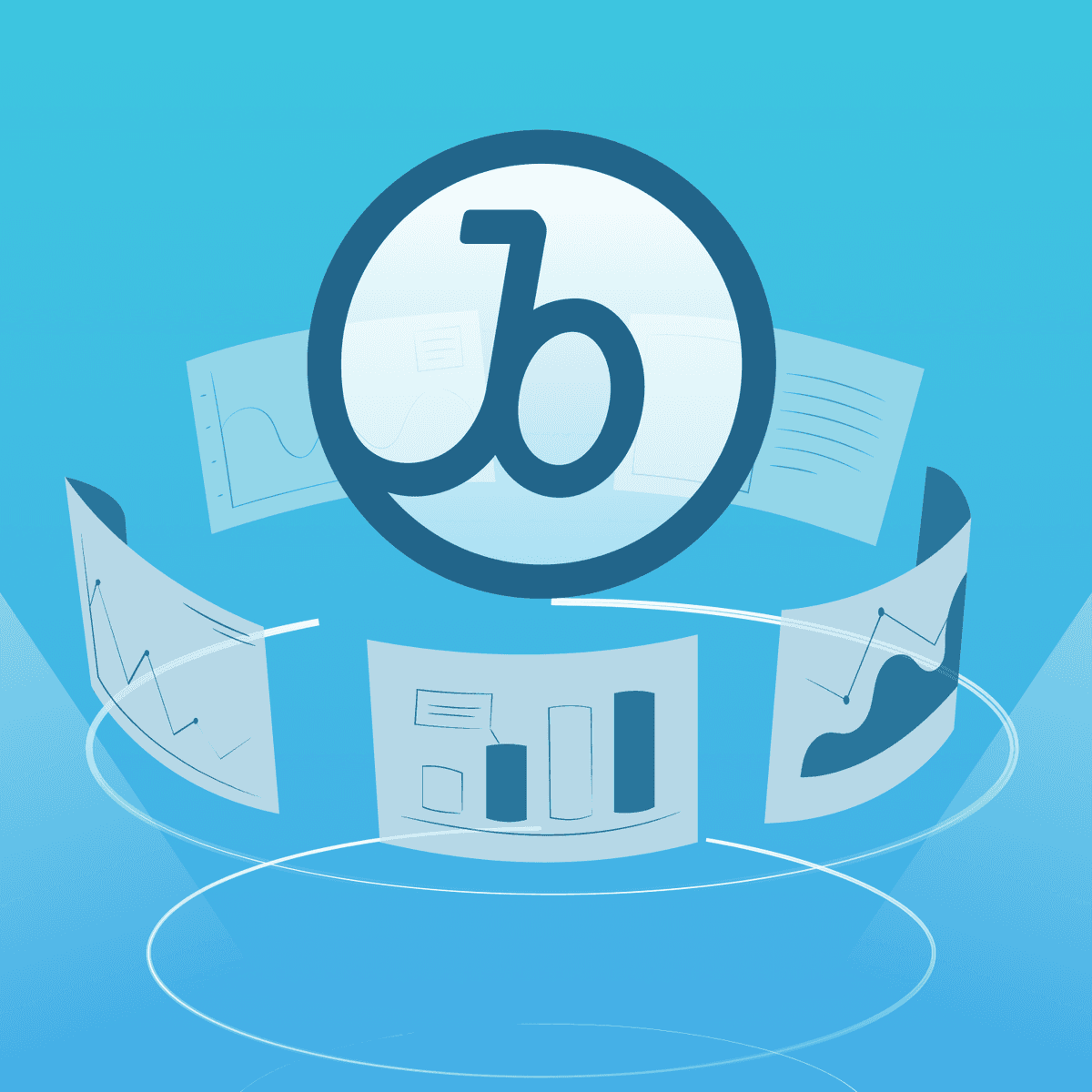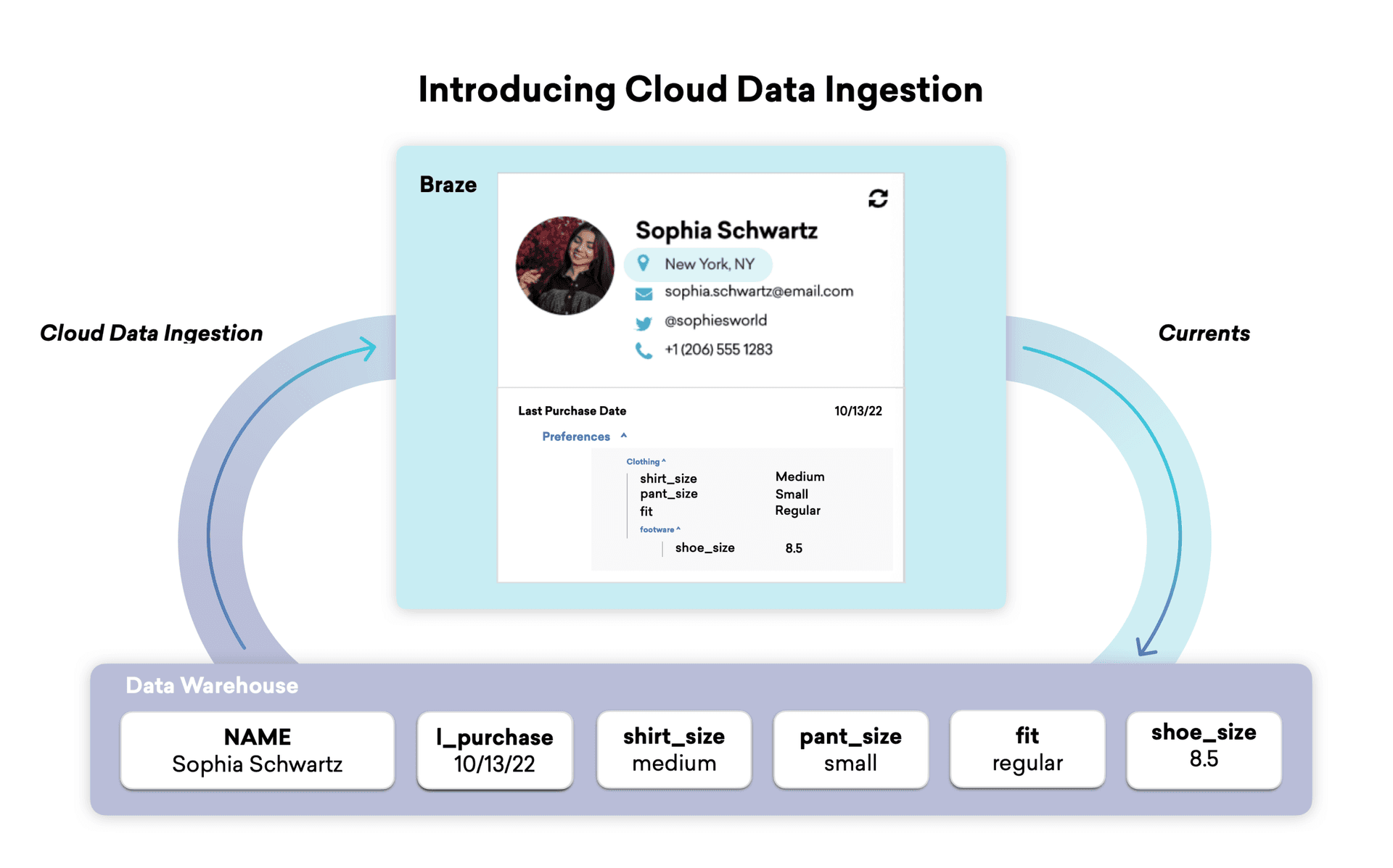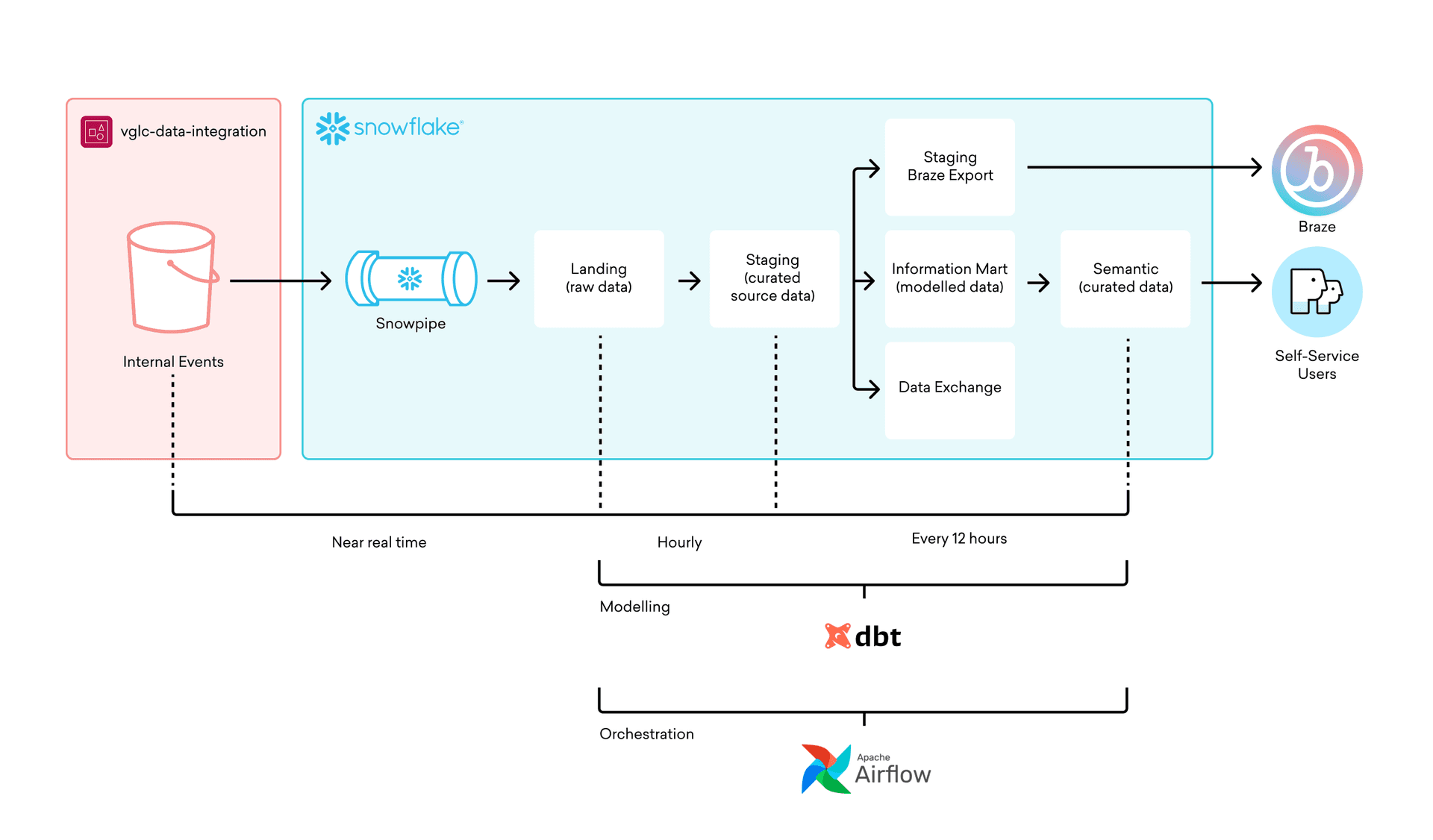How Braze Supports Effective, Actionable Data Management Across Data Warehouses and Other Third-Party Systems
Published on January 18, 2024/Last edited on January 18, 2024/10 min read


Colleen Kerr
Senior Product Manager, BrazeUsing data effectively in your customer engagement programs depends on coordination. When all the different systems you’re leveraging to gather, process, and act on data can speak to each other in the moment and work as a unified whole, the result is kismet—timely, responsive messages, just-right recommendations, and exceptional customer experiences. When they’re out of sync, however, chaos reigns, undermining brand equity and making life miserable for marketers.
To use data effectively in customer engagement, brands need to be able to gather data from disparate sources, build unified customer profiles, create and leverage dynamic segments, activate the information at their disposal via personalized, cross-channel campaigns, then use the engagement insights from those messaging flows to iterate on and optimize their programs. One of the biggest factors that influences whether brands are able to make that happen is the composition of their marketing technology stack.
Braze is designed to be able to work seamlessly with a wide array of different technologies and systems in order to help brands make the most of their customer engagement programs. But not every solution makes sense in every situation. To help marketers and technical teams make thoughtful, considered decisions about their customer engagement stacks, let’s take a look at how the stack has been evolving over the years and what implications those changes have on modern marketing.
From CDPs to Data Warehouses: An Evolving Customer Engagement Data Landscape
Let’s look back a few years, (eons in tech time) to examine the prevailing wisdom regarding data management and customer engagement. At the time, brands often felt that a best-in-class stack necessarily included a customer data platform (CDP) in order to support the movement of information throughout your collection of technologies. On the messaging side, there was a sense that pairing a CDP with a customer engagement platform like Braze would give brands the much-vaunted bi-directional flow of data—that is, the ability to easily collect, connect, and take action on your data across any customer touchpoint.
But while CDPs can be a very useful tool to support data management, some brands came to view CDPs as a customer engagement cure-all, setting up expectations for the technology's ability to address all manner of data issues and needs that weren't rooted in reality. At the same time, the growing popularity and sophistication of cloud data warehouses made it possible for more brands to handle their data normalization and reconciliation needs without necessarily leveraging a CDP. The result? More diversity among brands' customer engagement marketing stacks, with some brands using data warehouses without CDPs and others using the two technologies together.
Here at Braze, we noticed a related trend in recent years among our customers and prospects. While CDPs remain an important part of many brands’ technology stacks, especially among enterprise brands, their position as the de facto center of gravity for marketing technology has slowly been ceded to data warehouses like Snowflake and AWS Redshift. With more brands using their data warehouses to collect, analyze, and explore the information that fuels new campaigns, Braze made the call to prioritize direct connections to this emerging customer engagement powerhouse—something that came to fruition with the launch of Braze Cloud Data Ingestion (CDI) in 2022.
Know Your Technologies: CDPs vs. Customer Engagement Platforms vs. Data Warehouses
All right, you may be asking, that’s all well and good—but how do I know what technologies I should be using today? To clear things up, let’s take a look at these three key types of customer engagement solutions and dig a little deeper into what each one can do to help support an effective marketing strategy.
1. Data warehouses: This technology helps brands collect, analyze, explore, and experiment on their data, typically within a single, centralized location. Data warehouses can serve as a single source of truth when it comes to that organization’s data. Brands often see notable upfront effort and costs as they work to build a cohesive, centralized data set in their data warehouse, due to the work required to normalize match data as it's ingested into the solution. However, once that work is done, data warehouses tend to be extremely versatile and powerful, making it possible for brands to power advanced reporting, machine learning (ML) training, and other impactful use cases within their data warehouse.
2. Customer data platforms: CDPs integrate with many legacy systems and SaaS solutions, allowing brands to seamlessly manage data across a variety of customer touchpoints. These solutions are also designed to support key tasks such as user identity resolution, data transformation, and statistical scoring/modeling capabilities; however, many of these functionalities are also supported by data warehouses, so it’s wise to consider which ones are best handled by which technologies when it comes to your brand’s technology stack. In general, CDPs require less initial investment than data warehouses and can support data normalization within their UI, making it comparatively fast and easy to get started; however, incremental costs can be higher and adding additional use cases (like in-house ML) will usually require investing in additional third-party tools.
3. Customer engagement platforms: These platforms help brands take action on data by allowing marketers to plan, build, trigger, send, analyze, and optimize messages and customer experiences. Think of customer engagement platforms as the part of your technology stack that allows you to connect directly with each individual user, ideally with cross-channel experiences informed by data that’s drawn both from your app/website (likely via SDK or API) and also from your data warehouse and/or CDP.
4. Other solutions touching customer data: While customer engagement platforms, CDPs, and cloud data warehouses are some of the most prominent technologies touching data in connection with brands' marketing efforts, they're far from the only ones. Many organizations leverage analytics platforms (e.g. Amplitude, Mixpanel) to dig deeper into the customer data at their disposal, supporting more nuanced insights and segments, among other use cases. For brands that have a significant customer service needs, customer service and support solutions (e.g. Zendesk) can be both a source of and destination for first-party data, in order to inform representatives as they work through customer cases. There are also many other less-common technologies (e.g. machine learning training platforms) that brands might leverage as part of their stacks, depending on their specific business needs and areas of focus.
How to Effectively Activate Data with Braze—and Maximize Data Value

For brands looking to streamline the connections among data and customer engagement platforms in order to build more efficient processes that generate stronger results, the connection between Braze and leading data warehouses supported by CDI and our Braze Currents high-volume, real-time data export tool represents a big opportunity. Let’s take a look at some of the ways Braze and data warehouses can work together to support better customer engagement processes and outcomes:
To support effective data management. Brands can take advantage of information from major cloud data warehouses (BigQuery, Databricks, Redshift, and Snowflake) within Braze to deepen their understanding of each customer and then take action on that understanding through their messaging efforts. CDI and Braze Currents let brands sync data between the platforms on their own schedules and control what information is available to marketers, data scientists, and other stakeholders in which solutions, supporting more efficient use of that data. By some counts, more than two-thirds of data that gets collected goes unused. But when you leverage the Braze platform together with data from your data warehouse, data isn’t just collected—it becomes easy to deliver relevant marketing experiences that drive customer lifetime value.
To support segmentation and personalization. If you aren’t managing and activating your data effectively, the result is often the delivery of generic or incorrect messages, something that leads to frustration for 76% of consumers. Thankfully, it’s possible to unify your data and make it actionable in one place when you integrate your cloud data warehouse with Braze, and take advantage of the Braze platform’s built-in segmentation and personalization (including Liquid personalization, action-based message triggering, and Connected Content).
To supercharge your personalized marketing efforts, consider these takeaways:
- Increased competition and the rise of digital customer engagement have created new pressures on marketers to be more data-driven than ever before. Data activation bridges the gap between data infrastructure and marketing action, making more of the information brands hold actionable in their marketing efforts.
- Be thoughtful about what information you need in order to tailor or enrich the messages and customer experiences you’re serving up to individual users. Data is a powerful tool to support audience segmentation and timely personalization, but there’s no benefit to moving data between systems that you have no plan or ability to use to support a deeper understanding or a better customer experience.
- The right marketing stack embraces data agility. Adopt customer engagement platforms that seamlessly integrate with your technology stack, instead of siloed tools that create multiple sources of truth.
How Virgin Red Leverages Braze and Snowflake to Drive Engagement and Acquisition
Problem
Virgin Red, the travel and hospitality loyalty business, wanted to simplify its tech stack and ensure that its customer engagement platform is an efficient, data-driven engine for cross-channel personalization, engagement, and member acquisition.
Strategy
To reduce engagement silos between messaging channels, support more scalable GDPR compliance, and cut down on the time required to ingest and act on the user data they collected, Virgin Red made the call to consolidate its customer engagement into an all-in-one, marketer-friendly platform capable of triggering and sending messages across all relevant channels: Braze.
Results
By using Braze alongside Snowflake, Virgin Red streamlined customer engagement, downsizing from three tools to just one. The IP warmup powered by Braze Cloud Data Ingestion drove an open rate of 45%, with 7K+ members clicking to learn more about the referral program, leading to a healthy new member signup rate.

Read more about how Virgin Red worked at speed and scale using Braze Cloud Data Ingestion.
Final Thoughts
Data teams like tech stack solutions that help bring marketers closer to data. Why? It allows engineers to maximize their investment in the technologies, and to reduce the time spent managing data pipelines and APIs. And a more streamlined tech stack makes it easier to provide marketers with an up-to-date but controlled view of customer data that can support stronger customer relationships and marketing outcomes.
With Braze and Cloud Data Ingestion, the process of bringing data into Braze is faster and more cost-efficient than ever—and greatly improves segmentation. Instead of devoting more time and money to technology integration, you can brainstorm creative approaches to launching campaigns. All you need to do is get started.
Learn how Braze and Snowflake help brands extract actionable consumer insights and enable effective cross-team communication, making it possible to deliver brilliant brand experiences.
Related Tags
Be Absolutely Engaging.™
Sign up for regular updates from Braze.
Related Content
View the Blog
How AI Decisioning Transforms Marketing (A Complete Guide)

Team Braze

AI decisioning cheat sheet: How to crawl/walk/run with BrazeAI Decisioning Studioᵀᴹ

Team Braze

A day in the life of a data scientist on the BrazeAIᵀᴹ forward-deployed engineering team
